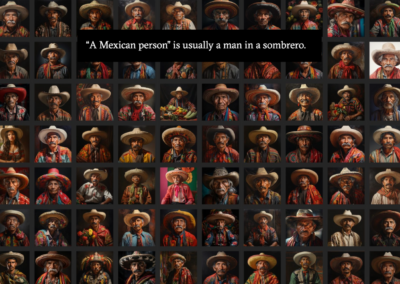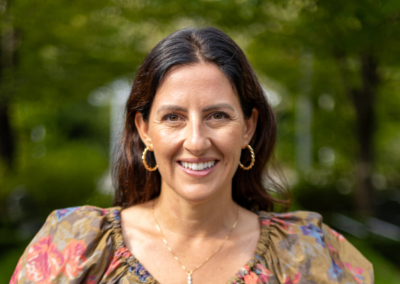When your organization is ready to commit to being human-centric and inclusive, how do you attract, hire, and retain diverse teams? This question should be on the minds of every leader and manager as we figure out our post-pandemic work reality, face massive layoffs, and confront shifts in political landscapes that affect people’s day-to-day life in our global society.
At We Are Rosie, we’ve worked to build a core team and community of marketers that is inclusive and diverse on many levels, and we help our clients meet their DEI commitments in meaningful ways.
For example, 80% of Rosies placed with one of our big partners (a global tech firm) over the last six months are from historically marginalized communities—which we define as anyone who self-identifies as being Black, Indigenous, a person of color, LGBTQ+, a woman, neurodiverse, and/or living with a disability.
To help guide your organization in building and maintaining diverse marketing teams, we offer five steps derived from the lived experiences of marketers from historically marginalized communities, as well as our 4Ps framework for hiring:
- Pedigree: Work history experience
- Potential: Strengths, tendencies and acquired skills
- Passion: Interests and passions
- Play: Work style and preferences
5 steps for building and maintaining diverse teams
1. Look beyond the resume—and make it clear that you do
If you want different lived experiences and identities on your team, prioritizing a looks-good-on-paper mindset is a no-go.
“When it comes to the 4Ps, it’s about looking beyond privilege,” shares We Are Rosie’s Head of Community, Hope Sonam. From her perspective, a resume is a record of what someone has previously achieved, but it doesn’t reveal the nuances of what someone could, wants to, or might be inspired to do.
Your organization can prove that it goes beyond the resume by using language in job descriptions that encourage historically marginalized communities to apply.
At We Are Rosie, we including the following statement on all job postings for our core team:
Don’t meet every requirement listed? At We Are Rosie, we pursue growth, believe in transferable skills, and review candidates through the lens of our 4Ps: pedigree, potential, passion, and play. So, if this role lights you up and you think you’d be an amazing fit, we encourage you to apply, whether your previous experience checks every box or not. You might be the perfect addition to our team in this role or another!
We’re dedicated to creating a culture and environment of inclusion; in fact, it’s one of our core values. We create space for every voice to be heard, every person seen. Our mission is to foster a more flexible and human approach to work that provides everyone dignity, respect, and access to opportunity.
Jennifer Glover, a recent MBA graduate and former Senior Content Operations Manager at Github, says that when companies encourage people to apply for a role even when they don’t meet all of the criteria, “that’s an indicator for me of the culture—that they’re invested in getting to know the actual applicant instead of relying on the bullet points on a resume.”
Seeing people as whole humans and not just a resume is a big part of attracting talent from different backgrounds in the hiring process.
2. Frequently question biases and ensure HR teams are diverse
To be successful in building and maintaining diverse teams, you must be ready to turn bias on its head, and fully embrace the potential of people.
“‘Potential’ is the strengths, tendencies, and any skills acquired that could allow [someone] to grow into a role or an opportunity,” Hope highlights.
It’s also a two-way street between your organization and the talent you seek; talent from historically marginalized communities look for evidence that organizations can check their own bias at the door and match their energy of want for something new.
Marketing ops expert Jennifer, who identifies as a Black woman and first-generation immigrant from Haiti, states, “I need a company that has innovation at their heart. They empower their team to take risks, and they are committed to having that psychological safety to enable their employees to take those risks. If you don’t have a hiring and talent team that not only welcomes historically marginalized communities, but also remains consistent in accepting that they take up space in that organization, you will fail those communities.”
Meera Tikku, an independent marketer, adds her thoughts: “Hiring a diverse group of people in HR teams [that] come from all kinds of experiences, backgrounds, communities, etc, I think would prove to provide a more empathetic sounding board for those applying to a company. HR departments essentially act as gatekeepers for the company and the more people in those positions who come from varied backgrounds, the more we can reduce application, interview, etc. biases.”
Rejy Drayton, who identifies as a Black Queer marketer, echoes those sentiments. “It’s baffling to see that over 76% of Chief Diversity Officers are white,” he explains. “Something about that statistic sounds antithetical to the position itself. In a world that’s so divisive, folks are looking to the organizations that they support to support them in return.”
Does your organization have to be held responsible for eradicating all bias? Short answer: no.
“I don’t think we’re ever going to eliminate [bias],” says Hope. “If bias is brought to mind, and you acknowledge that it exists, then you can actively combat it.”
In addition to actively combatting sexism, ageism, racism and ableism, consider what you can do to reduce attractiveness bias, which the Harvard Business review calls “one of the most prominent biases [that] is hardly ever discussed or acknowledged.” At We Are Rosie, we use avatars when submitting Rosies for a project with a client. This helps minimize visual biases in the early stages of the hiring process.
3. Recognize passion and individual goals
When you view candidates as individuals, it’s easier to see how their passion could fuel them to do great work as part of your team.
“For me, what makes an organization truly human, inclusive, and diverse is understanding the nuances of humanity personally,” says Earica Parrish, a creative multi-hyphenate who identifies as an African-American woman. “A lot of people just look at things in black and white—[but] keeping those nuances in mind, really understanding a person for who they are first, and then as a professional second—that’s always been my approach in the workplace.”
Talent from historically marginalized communities have generations of passion driving them to make a better existence and world for their communities.
Hope explains, “Maybe a person has never worked in healthcare, but they’ve gone through—or somebody in their family has—a serious health crisis and now they want to work in healthcare for a particular brand or client type because they’re passionate about moving that mission or vertical forward.”
To dim someone’s passion for doing or wanting to try something different is antithesis to building and maintaining diverse teams. “If you tell somebody that they can’t be themselves, and they can’t show up in their full truth and expression, it’s going to affect everything from culture to performance to perceived diversity and inclusion on the team,” Hope adds.
4. Accept flexible work structures as permanent
If you want to remain top of mind with historically marginalized talent, then stay the course with the remote and flexible work structures that became the norm for our industry during the pandemic. It’s not only an innovation-driver; it’s also a reliable strategy for building and maintaining inclusive and diverse marketing teams.
“If you study economics and entrepreneurship, when people go off to create their own businesses, they do things that they didn’t get to experience at the company that [restricted] them,” acknowledges Earica.
This extends beyond roles and responsibilities and includes constructs on time, location, and style of work. In fact, in the 2022 Rosie Report, 64% of Black workers reported being better able to manage stress and 50% reported an increase in feelings of belonging to their organization when working from home.
“What does it mean for people who have a disability if we insist that everybody work in a physical office? What does it mean for Black people or people of color if we tell them that the only way to work on this big brand is to move to a market where they don’t feel a sense of community?” asks Stephanie Nadi Olson, founder of We Are Rosie.
“Working remote is a lever of inclusion because you’re not just hiring folks from New York or from Silicon Valley, or people who can afford to live in those places. You’re hiring from all over, [where] you have the diversity that’s represented in the US,” Hope emphasizes.
When people live happier, healthier lives that meet their needs, they become more fulfilled human beings, and it’s easier to retain them at your organization. Research also shows it increases productivity—so consider flexible work structures as an investment that can pay dividends.
5. Think about intersectionality and don’t oversimplify ‘diversity’
There is no single issue to focus on when building and maintaining human, inclusive, and diverse teams.
Because of the intersectionality of identities, your organization will have to acknowledge the many issues impacting the lives of the talent you seek and value.
For example, independent marketer Meera says she identifies as a female first-generation South Asian-American, specifically Kashmiri-Pandit, an ethnic minority within the Indian diaspora that has gone through and continues to face ethnic cleansing, genocide, and terrorism. “I have all of these complex identities stacked up on top of each other,” she explains.
Jennifer adds, “It’s human nature to want things to be simple. I think as we’re finding out now, things are very rarely that. It’s complicated and the only way to get through the complication is to talk and figure it out together.”
It’s no longer acceptable to use performative language or surface-level actions to seem aware and committed. Doing the work was never supposed to be easy.
Rejy adds, “Intersectionality is the name of the game, folks. The more multifaceted you can be in the identities represented and valued, the greater of an impact you’ll have as you can serve more people where they are.”



